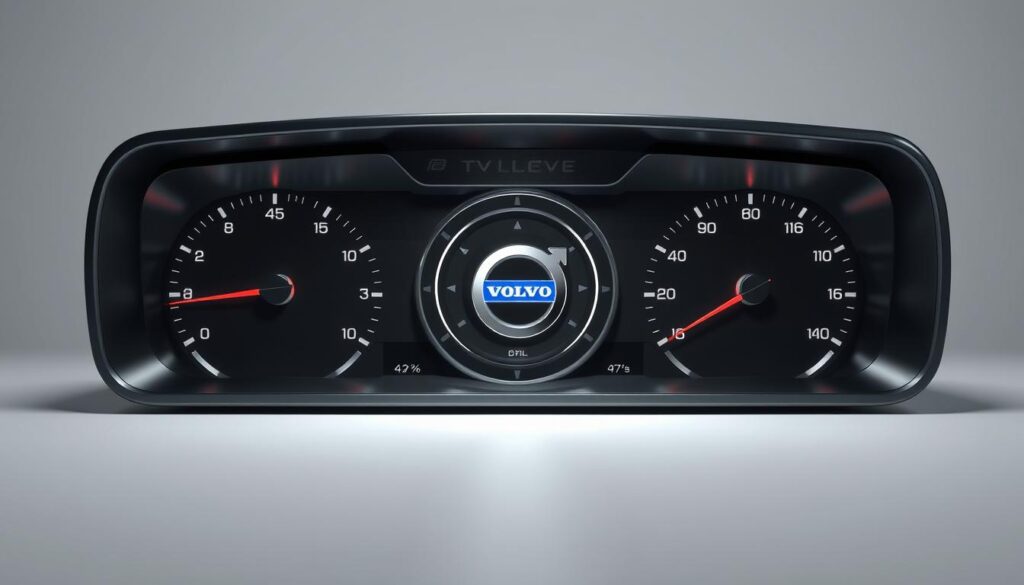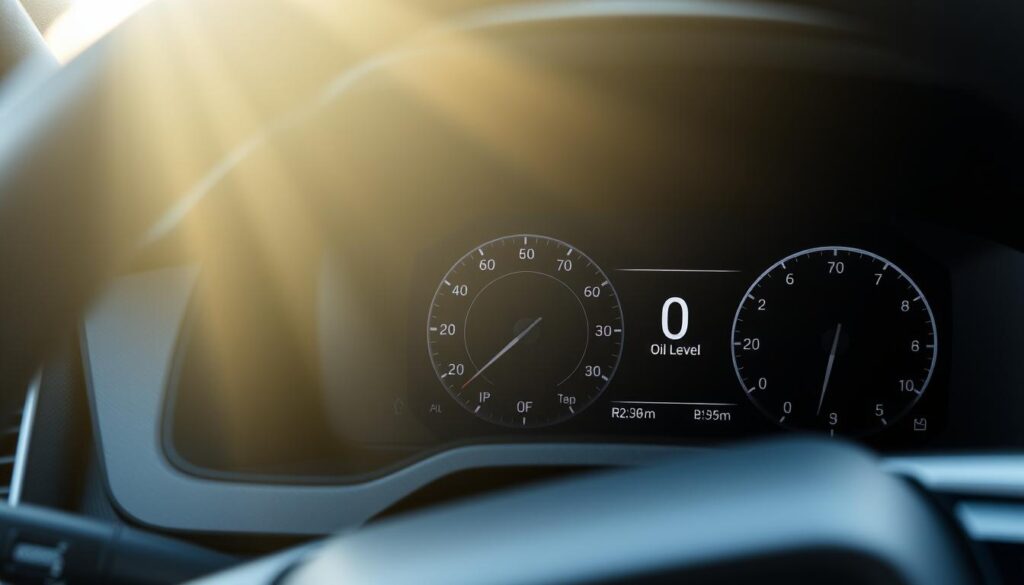This brief guide gives clear, updated information for U.S. drivers who need a reliable oil level read on modern models.
The piece explains that many Drive‑E cars show the level on the instrument panel rather than a physical dipstick. You will learn two accurate methods to view the oil range and what conditions must be met for a valid reading.
Safety and care matter: ignition position, a cool engine, and level parking protect the system and avoid false readings. The article also covers MIN‑to‑MAX meaning, on‑screen messages such as “Not available” or “Oil level OK,” and when a dealer should be contacted.
Follow the owner’s manual for oil specs and exact fill amounts so you add only what the engine needs. This short article separates safety checks from step‑by‑step procedures so action is simple and confident.
Key Takeaways
- Many modern models use an electronic oil level readout instead of a dipstick.
- Two panel methods let you view the oil level reliably.
- Readings require ignition position, cool engine, and level parking.
- Interpret MIN‑to‑MAX and follow on‑screen prompts before adding oil.
- Use correct engine oil and consult a dealer for low oil alerts.
Before You Begin: Conditions, Safety, and What Your Volvo Uses to Measure Oil Level
Prepare the car and environment so the on‑panel reading is reliable.
In many Drive‑E models an electronic sensor reports oil level on the instrument panel rather than offering a physical stick. Park on flat pavement and allow the engine to cool. These two steps prevent false readings caused by angle or heat.
Set the ignition correctly. Most models require ignition position II. On cars with push‑button start, press START/STOP ENGINE about two seconds without the brake to reach that state. The display then powers up and can show a valid reading.
If the panel shows “Not available” or “No values available,” it usually means the preconditions were not met, not that the sensor is faulty. Volvo also advises either driving roughly 20 miles (30 km) or letting the vehicle sit level with the engine off for up to two hours for the most accurate result.
Safety and specs: follow the owner’s manual for correct oil and fill amounts. Avoid spills on hot exhaust parts to reduce smoke and fire risk.
How to Check Volvo Oil with the Dipstick
On several current models, an electronic sensor shows oil status on the instrument panel, replacing a manual stick.
Using the left steering wheel lever and instrument panel (Drive‑E vehicles)
Prepare the vehicle: park on level ground, let the engine cool, and set ignition to position II by pressing START/STOP ENGINE for about two seconds without the brake.
Use the left steering wheel lever. Rotate its scroll wheel until the oil level item appears on the instrument panel. Press OK on the lever end to view the reading.

Using the Sensus Car Status menu to view MIN‑MAX on the instrument panel
With ignition in position II or the engine running, open Sensus Home and swipe right to left. Select Car status, then Status. The panel will show the MIN‑MAX range for an easy comparison to a traditional dipstick.
Understanding the MIN to MAX range and adding only the displayed amount
If the display reads “Not available” or “No values available,” confirm ignition position, level parking, and a cool engine, then retry. Sometimes the system needs time; drive about 20 miles (30 km) or park level with the engine off for up to two hours for an accurate reading.
Add only the amount shown and use the grade specified in your owner’s manual. If a low alert persists, contact an authorized dealer for inspection and service.
Interpreting Messages, Timing for a Correct Reading, and When to Contact a Dealer
The instrument display shows status messages that explain whether a valid oil level reading is available.
What messages mean. When the instrument panel shows “No values available” or “Not available,” the unit usually lacks correct conditions. This does not automatically mean the sensor is faulty. “Oil level OK” means the level sits inside the min max range and no immediate action is needed.

Timing and correct reading. Allow time for the system to stabilize. Drive about 20 miles (30 km) or park level with the engine off for up to two hours before relying on the reading. Recheck ignition position and temperature if messages persist.
When to contact a dealer. If a low oil alert appears or messages repeat without resolution, add only the amount shown and follow your owner’s manual for grade. Then contact an authorized dealer for diagnostic checks and possible inspection.
| Message | Meaning | Recommended action |
|---|---|---|
| No values available / Not available | Conditions not met for a valid reading | Confirm ignition position, park level, wait or drive ~20 miles |
| Oil level OK | Level within min max | No action required; continue routine checks |
| Low oil alert | Level below min | Add only indicated amount; contact authorized dealer |
Conclusion
This short wrap-up helps you finish a reliable oil level check on Drive‑E cars.
Follow the steps in this article and you can confidently verify engine oil and level using the electronic system that replaces a traditional dipstick. Park level, let the engine cool, and set ignition correctly for a dependable on‑screen read.
Use either the left lever method or Sensus Car status to view oil information. Treat the MIN–MAX band like a manual gauge and add only the amount shown, using the grade listed in your owner’s manual. If any question remains, contact an authorized service team for guidance. Bookmark this article for quick reference and note the last updated guidance before future checks.
FAQ
What steps ensure an accurate dipstick reading on a Volvo?
Park on level ground, let the engine cool for several minutes or follow your owner’s manual instructions, set the ignition to the correct position if required, and wipe the dipstick clean before reinserting it for a final reading.
When should the dipstick be used versus the instrument panel readout?
Use the mechanical dipstick for a direct oil check on older models or when the panel shows an unclear message. Modern Sensus-equipped Volvos often display a MIN–MAX range in the instrument cluster; follow the panel guidance for Drive‑E engines.
What does a MIN to MAX range mean and how much oil should be added?
The MIN–MAX marks indicate the safe oil range. Add only the amount needed to bring the level into that band. Overfilling can harm the engine, so add small increments and recheck.
What do instrument messages like “No values available” or “Not available” indicate?
Those messages mean the car’s sensors cannot provide a reliable oil level reading—often because the engine is warm, the vehicle isn’t on level ground, or the ignition isn’t in the correct position. Use the dipstick or repeat the digital check under recommended conditions.
How does the Sensus Car Status menu show oil level on the instrument panel?
Navigate to the Car Status or Vehicle Info menu on Sensus. The display will show a MIN–MAX bar or a message. Follow any prompts and only add oil if the readout falls below MIN.
Are there safety precautions when checking oil near the exhaust or hot engine parts?
Yes. Avoid spills on hot exhaust components and wear gloves to prevent burns. Work on a cooled engine or follow the manual’s warm-engine procedure, and dispose of any spilled oil properly.
How often should oil level be checked in normal driving conditions?
Check monthly or before long trips. Cars with digital monitoring may reduce the need for frequent checks, but regular visual checks with a dipstick are good preventive maintenance.
What type of oil should be used and where is that information found?
Use the oil grade and specification listed in your Volvo owner’s manual or oil cap. Using manufacturer-recommended oil ensures correct viscosity and sensor compatibility.
When should a dealer or technician be contacted about oil-level readings?
Contact a dealer if the instrument panel continually shows errors, if oil consumption seems excessive, if readings fluctuate wildly, or if you suspect a sensor fault. A technician can diagnose leaks, sensor issues, or engine problems.
Can a dipstick reading be trusted after the engine has run recently?
Readings on a hot engine can be misleading due to oil circulation and expansion. Follow the owner’s manual guidance—many manufacturers recommend waiting several minutes after shutdown or performing a warm-engine check procedure described in the manual.



